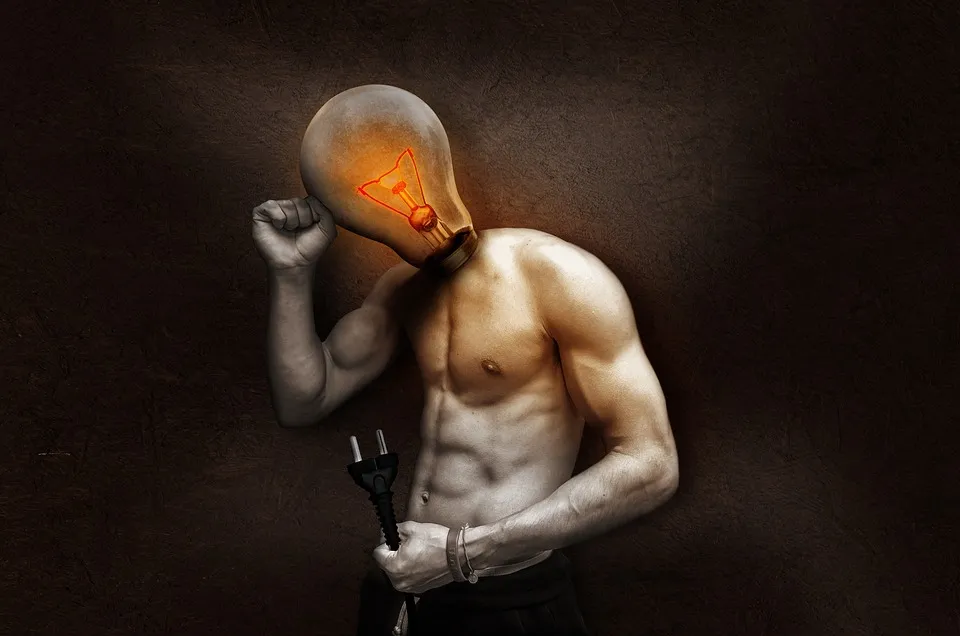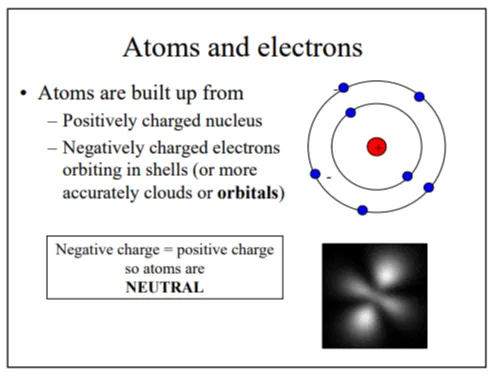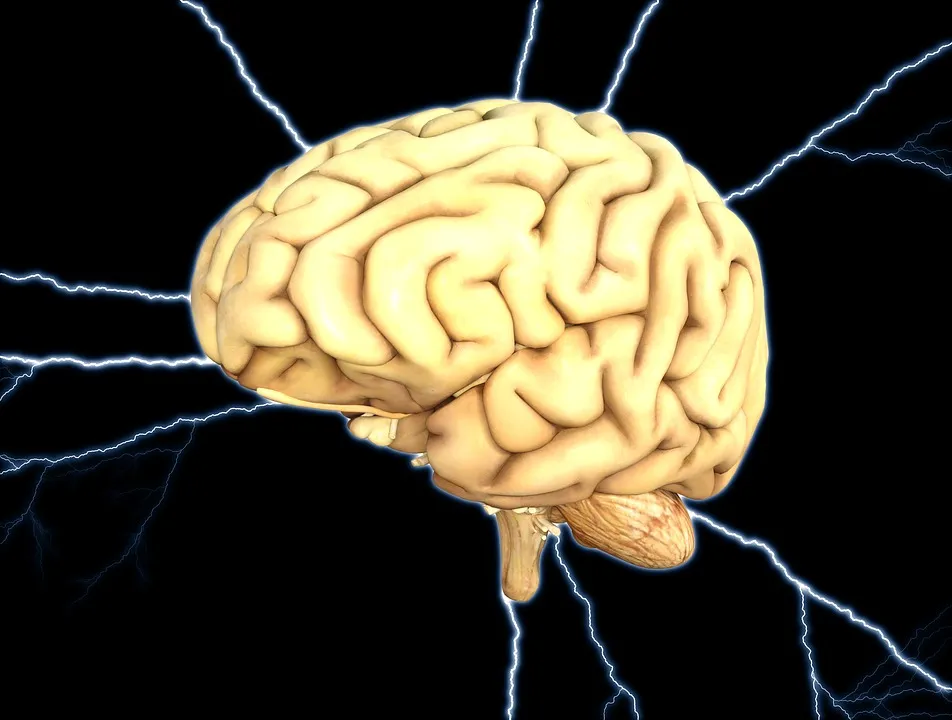
Pre-Introduction
Hello guys, I know that I’ve been absent for almost a month, but contrary to the summer season's “idle mood” I’ve been extremely busy (and probably would remain so for the next few months) and I just couldn’t find some free time and opportunity to write another article for Steemit. I will try to be more active with content or at least find sometime to read your works and engage with constructive comments and discussion!
That being said, I would like to continue with todays article. As you might’ve already guessed, it will be related to electricity and more specifically to human electricity.
So, what made me write an article on this topic?
I do not pretend to understand and know much about electricity, but what got me into writing about this topic is a situation from my work environment as we were discussing some aspects of how the polygraph works and in the conversation one of my colleagues (who I very much respect) stated that the human body does not produce electricity. After he said that I got really angry, but did not confront him, because I did not want to embarrass him in front of the group. Instead I decided to read more on the topic and to write an article about it. So, hopefully you would enjoy this read, as much as I enjoyed writing about it.

Introduction
The truth is that not only our bodies are capable of generating electricity, but the electricity we produce is in the essence of our existence. Without it, we are nothing but “dead meat”. Even now, when you are reading this article, you produce around 100 watts of power. To do so, you must use approximately 2000 kcal of food energy, which is why it is recommended to daily intake calories around 2000 kcal. This electrical power increases when you are physically active. Some people are able to produce between 300 and 2000 watts (depending on the physical condition of the person and the duration of exercising).
When scientists talk about the nervous system sending ‘signals’ to the brain, or synapses ‘firing,’ they are talking about the flow of electricity between different points. Electricity allows our cells to send electrical signals between with each other, meaning that it (electricity) is in the essence of the “interaction” between our nervous system and the brain. This means that these electrical charges are allowing a nearly instantaneous communication.
These “messages” are responsible for controlling every aspect of your functioning (autonomous or voluntarily): the rhythm of your heartbeat, the movement of blood around your body, body temperature, muscle activity and many other functions! What we refer to as our “biological clock” is in fact a very complicated communication, which regulates our circadian rhythms.
From all the facts mentioned above we can conclude that we are, simply said, electrical beings, which cannot survive without electricity!

But how is this electricity generated?
I will try to keep it as simple as I can while at the same time deliver the essence of the scientific information about the topic properly. I’ve always found it easier for me to start from the smallest to the largest and I will try to apply this approach in explaining electricity also.
The human body is composed of atoms and molecules organized into cells. The atoms are made up of positively charged protons, negatively charged electrons, and neutral neutrons.

Most known elements have equal number of electrons as they do protons and this provides a balance between negative and positive charges.
Protons reside in the nucleus (center) of the atom while electrons rotate around the nucleus. The energy holding the electrones to the atom is restricted to specific levels known as shells. These shells allow for specific spaces between the rotating electron and the center protons to occur. Negatively charged electrons are attracted to positively charged protons and the further away from the center of the atom an electron is (the wider the shell is), the easier it is that electron “to cut” free of it.

Basic elements in our universe, like the oxygen we breathe, and the calcium and potassium we consume through food, have specific charges of protons and electrons, which differentiates them from other elements. When we eat or drink, we break down by digestion the larger molecules, creating smaller ones. Those smaller molecules can be used by our cells to do work. This process is called cellular respiration. All of those molecules and elements in our bodies have the potential to create electrical impulses. Whether positive or negative, the charges in the molecules react to the ones “joining” them. The reaction between them is what creates the energy needed to move electrons.
An atom which has unbalanced charges will become either positively or negatively charged. The switch from one charge to the other allows electrons to flow from one atom to another – this is what we call electricity. This means that our cells generate electrical charges via electrolytes like sodium and potassium using a mechanism known as the "sodium-potassium gate." When our cells send a message one point another, the “gate” opens, allowing sodium and potassium ions to move freely into and out of the cell.
This swap generates an electrical impulse, which travels throughout the cells, repeating the process until it reaches (for example the brain) and delivers the message about the event which occurred (for example physical pain). In basic terms, that’s what I understood about the process of electricity in our body. But it’s not enough to get the full picture.
Our bodies have the ability to conduct and control electricity through complex and dynamically changing bio-electrically charged neurological networks. Somehow we are able to guide this processes and transforming them into performing the actions of the body while at the same time receiving and transcoding information through our sensory apparatus. In order to understand the full picture, we need to talk about electrical current, voltage and resistance.

Electrical current and electrical shock
To put in one sentence, electrical current refers to the amount of electrons or ions (negatively or positively charged atoms) flowing per second. It is measured in amperes or milliamperes (1 mA=1/1000 of an ampere). In literature about electrical current, you would find that it is usually related to electric shock. The amount of electric current that flows through the body determines various effects of an electric shock.
While this topic still remains controversial and interesting to discuss, the details about it are out of the scope of this article, so I will not stop and discuss it. What we should know though is that when we are exposed to 1 mA of electrical current, it could result in a slight tingling sensation. At 5mA we could experience a slight shock. At 6mA to 16mA, the shock is painful and can cause a loss of muscular control.
Between 17mA and 99mA extreme pain is experienced along with respiratory arrest and severe muscular contractions. At this point death is possible - the person is unable to let go of what they are holding. At 100mA to 2,000mA, there’s a high risk of uneven, pumping of the heart and muscular contractions. Shocks over 2,000ma can cause cardiac arrest, internal organ damage, and severe burns. Death is almost certain.
Voltage
Voltage can be defined as the force that pushes electric current through the body. Depending on the resistance, a certain amount of current will flow for any given voltage. It is the current that determines physiological effects. Nevertheless, voltage does influence the outcome of an electric shock in various ways.
Resistance
Being electrocuted is no fun at all. Еvеn though it takеs a cеrtain voltagе to makе a currеnt flow, thе amount of currеnt barging into our bodiеs dеpеnds on thе mеasurе of how pеrmеablе thе body is to currеnt, or simply, its rеsistancе. Our resistance is concentrated primarily in the skin. It is usually measured in ohms/cm2 and varies directly with the skin's condition.The lower the skin resistance is, the higher the chance is to conduct electricity and get injured if exposed.
So basically, every process in our body is in its essence and electrical process. Above we discussed how electricity happens in the human body and what follows if we are not careful with outside “sources” : ).
While how electricity could damage our bodies or lead to certain death is a topic interesting to discuss, I think that it deserves another article and a lot of research. However, what got me interested as I read further about electricity in human body was its relation to human consciousness.

Electricity and consciousness
The question about what is consciousness is a philosophical, neurological and psychological problem which has been discussed for decades and we still do not have a straightforward answer about it. The topic itself is worth to be discussed in a broad manner but for the purpose of this paper we will accept a more general definition which refers to “everything you experience”. It is the state we call of “being aware and responsive to your environment”. When we are presented with a visual stimuli, signals from our retina travel along nerves as waves of electrically charged ions. As they reach the nerve terminus, the signal is transferred to the next nerve by chemical neurotransmitters. Then the receiving nerve decides whether or not it will fire and produce a reaction to the stimuli. This is probably the most simple way to explain how electrical signals are processed in our brain before being transmitted to our body. But is this “movement” of ions and chemicals called consciousness? We are still unable to point certain no region or structure in the brain that is specifically responsible for conscious thinking. What consciousness really is, today remains a mystery.
The Conscious Electromagnetic (Cemi) Field Theory
In 2002 professor Johnjoe McFadden from at the University of Surrey introduces an interesting theory that regards our conscious mind could be as electromagnetic field.
He claims that his theory
solves many previously intractable problems of consciousness and could have profound implications for our concepts of mind, free will, spirituality, the design of artificial intelligence, and even life and death."
In his theory McFadden argues that the digital information from neurons is integrated to form a conscious electromagnetic information (cemi) field in the brain. This electromagnetic (em) field functions as a binding characteristic of consciousness, or in other words that this field is in fact consciousness.
A more recent study of neuroscientists at Yale University claims that a wave of electricity engulfs our brains as we go from unconscious to aware. According to the lead scientist Dr. Hal Blumenfeld, this could explain why we are aware of things that happen around us and why sometimes we are not. They experimented with nine people and asked them to watch a short film and notice different faces. They discovered that a wide electrical wave sweeps through subject’s brains, whenever they were asked to notice the faces in the video. After that, the scientists compared the brain activity in that very first second among people who noticed the faces. The information from such studies could be helpful to understand human consciousness and disorders like epilepsy and schizophrenia for example.

Conclusion
Hopefully this article was interesting to you and I apologize to those of you who found this information trivial, but since there are still people who think (or are not aware) how electricity works and why it is so important to be understood, I still think that this read would be useful to some of you.
It turns out that not only we produce electricity, but we actually are electricity. Too much or too less will kill us and just the “right amount” is enough for us to exist. But what exactly does it mean to be us is a question which we still have no answer to.
What are your thoughts on this topic? Do you have something to add or discuss? Please let me know in the comments below! As always, thanks for reading and upvoting! It means a ton! Cheers!
Sources:
Conduction of Electrical Current to and Through the Human Body: A Review;
Yale Scientists: Human Consciousness Seen As A Wave Of Electricity